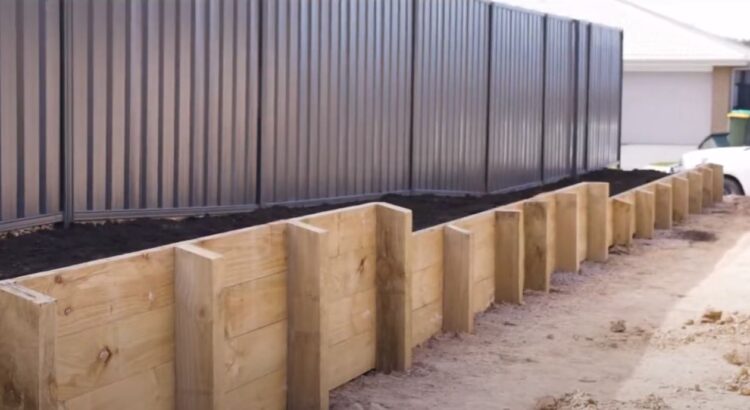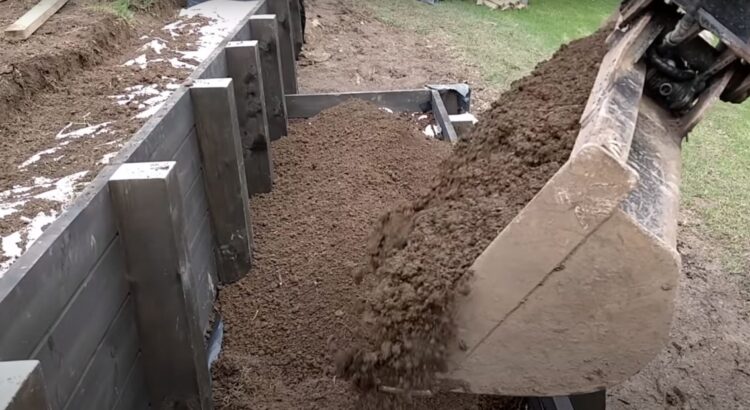The Lifespan of Timber Retaining Walls
A common inquiry when considering home improvements in Auckland is the durability of a wooden retaining wall. The simple answer? It depends. Several factors come into play, from the type of timber used, construction methods, to ongoing maintenance. Generally, though, with proper care, timber retaining walls can last anywhere from 10 to 20 years.
Type of Timber Matters
Not all woods are created equal. The longevity of your retaining wall primarily depends on the type of timber you choose. Here’s a rundown:
- Pine: Treated pine is commonly used for retaining walls Auckland-wide due to its affordability and availability. If adequately treated and maintained, a pine retaining wall can last up to 15 years.
- Hardwoods: Durable hardwoods like jarrah or red gum tend to have a longer lifespan, often extending beyond 20 years. Though pricier, they are valued for their natural resistance to decay and pests.
Environmental Impacts and Sustainability
Auckland’s unique climate, with its frequent rainfall and varying temperatures, can be demanding on wooden structures. Excessive moisture, in particular, can be detrimental, leading to rot, mould, and weakening of the wood. Thus, when considering costs, factor in expenses related to protective treatments and potential repairs.
Environmentally-conscious Aucklanders might also lean towards timber that’s sustainably sourced. This choice might slightly elevate the initial costs, but the long-term benefits to our planet, and often the quality of the wood, can be worth the extra investment.
The Tale of Two Suburbs: Ponsonby vs. Manukau
The longevity of your timber retaining wall might also be influenced by your specific suburb due to varying soil types and moisture levels. For instance:
- Ponsonby: This area, known for its heritage homes and villas, has soil that’s relatively stable. Here, the focus might be more on retaining wall design ideas NZ homeowners love, ensuring the wall complements the architectural beauty of the neighbourhood.
- Manukau: With its proximity to the coast, Manukau homes might encounter slightly more soil movement and moisture content. This could mean investing more in drainage solutions and possibly regular maintenance checks.
Auckland Council Bylaws on Retaining Walls
Before embarking on any retaining wall installation, it’s crucial to be aware of Auckland’s council bylaws. There are regulations regarding the height, position, and even the design, especially if your property borders public land or roads. Always consult with Auckland retaining wall builders to ensure your project meets all local requirements and avoids potential fines or disputes.
Construction and Maintenance
The expertise of your Auckland retaining wall installers plays a significant role in the retaining wall’s lifespan. Proper construction techniques ensure adequate drainage and stability. But the journey doesn’t end once the wall is up. Regular maintenance, such as checking for signs of wear, treating for pests, and ensuring effective water runoff, is essential for longevity.
A Word on Costs
Timber retaining walls are often a more cost-effective solution compared to their stone or concrete counterparts. However, it’s essential to factor in long-term costs. While a hardwood wall might have a higher initial cost, its extended lifespan and fewer maintenance requirements might make it more economical in the long run.
In Conclusion
A timber retaining wall, when well-planned and maintained, is a durable and aesthetically pleasing solution for Auckland homeowners. Whether you’re in Ponsonby or Manukau, make informed choices, considering both the initial investment and long-term care requirements. With the right decisions, your retaining wall can be a lasting asset to your property.
Key Takeaways: Timber Retaining Walls in Auckland
Timber Choice Impacts Longevity:
The type of wood you select for your retaining wall, be it pine or a durable hardwood, will significantly influence its lifespan. While treated pine is popular and affordable, hardwoods like jarrah can offer extended durability, often surpassing 20 years.
Local Factors Matter:
Auckland’s unique climate and varying soil conditions in different suburbs (like Ponsonby and Manukau) can influence the durability and maintenance needs of a wooden retaining wall. Being aware of these conditions and planning accordingly can ensure your wall’s longevity.
Stay Informed on Bylaws:
Auckland Council has specific regulations regarding retaining walls. Before construction, consulting with professional Auckland retaining wall builders to ensure compliance is vital to avoid potential disputes and added costs.
Frequently Asked Questions: Wooden Retaining Walls in Auckland
What type of wood is recommended for retaining walls in Auckland?
While many homeowners opt for treated pine due to its cost-effectiveness, durable hardwoods like jarrah or macrocarpa are excellent choices for those seeking extended longevity.
Do I need council approval to build a retaining wall on my property?
Depending on the height and location, some retaining walls might require approval from the Auckland Council. It’s always advisable to check local regulations before starting construction.
How do I maintain my wood retaining wall to maximise its lifespan?
Regular inspection for signs of rot or insect damage, proper drainage to prevent water build-up, and periodic resealing can help maintain the integrity of a wooden retaining wall.
Are there sustainable wood options available for environmentally-conscious homeowners?
Yes, there are several sustainable timber options certified by the Forest Stewardship Council (FSC) available in Auckland. These woods are harvested responsibly, ensuring minimal impact on the environment.
Can I DIY a retaining wall, or should I consult with Auckland retaining wall builders?
While DIY is an option for smaller walls, for more complex or taller walls, it’s recommended to engage with professional retaining wall installers. They can ensure the wall is built correctly, safely, and in compliance with local regulations.
References
- New Zealand Timber Industry Federation. (2019). Timber Choices for Construction in New Zealand. NZTIF Publications.
- Auckland Council. (2021). Building and Resource Consents. Auckland Council Regulations and Guidelines.
- Forest Stewardship Council New Zealand. (2020). Sustainable Timber Options in New Zealand. FSC Publications.
- Institute of Professional Engineers New Zealand. (2018). Best Practices in Retaining Wall Construction. IPENZ Publications.
- New Zealand Wood. (2020). Maintenance and Care for Wooden Structures. NZW Guidelines.
- Building Performance New Zealand. (2019). Guidance on Building Retaining Walls. Building Performance Guidelines.

